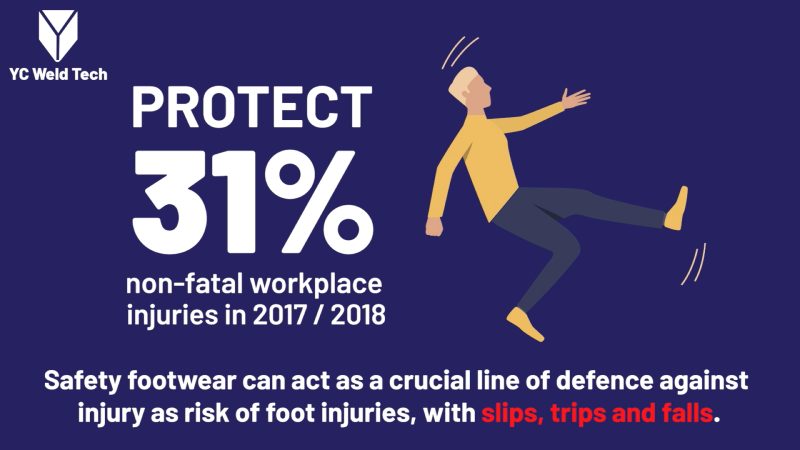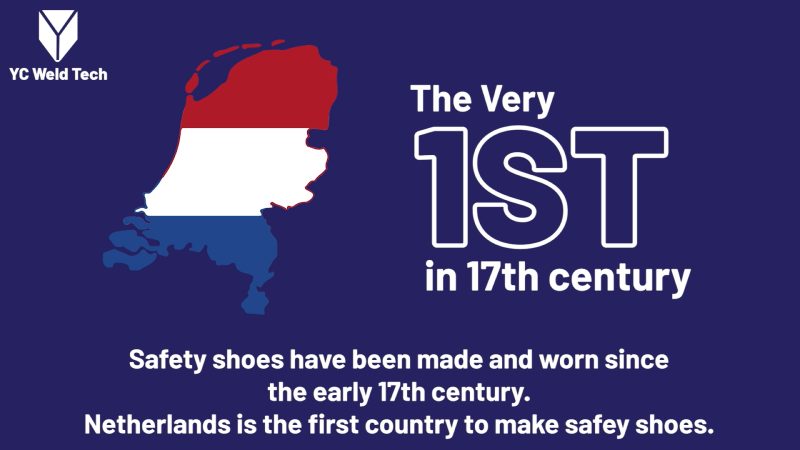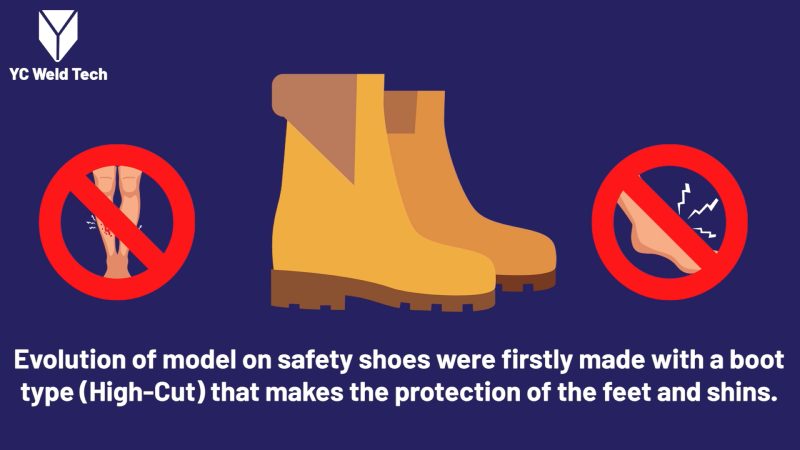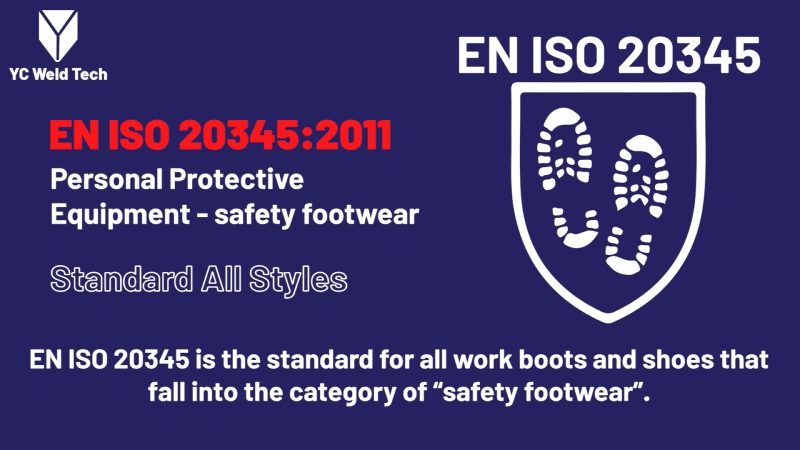Did You Know? Living in the 21st century, there are a lot of interesting facts about Safety Shoes that you might didn’t know were true. Let’s read.

Safety footwear can act as a crucial line of defense against injury as risk of foot injuries, with slips, trips and falls accounting for 31% of all non-fatal workplace injuries in 2017/2018.

Safety shoes have been made and worn since the early 17th century. Netherlands is the first country to make safety shoes.

Those shoes are boots-shaped and handmade of wood, known as “Sabots”, used to protect from hard and sharp objects that can injure the foot.

During the evolution of toes protector on safety shoes, protective toes made of iron-steel. Although so strong, but this material is uncomfortable and heavy, thus disrupting the movement or activity of wearers.

In 21st century, evolution of model on safety shoes were firstly made with a boot type (High-Cut) that makes the protection of the feet and shins. Along with the changes in fashion, safety shoes is now emerging with more fashionable kind of safety shoes.

The wearer do not have to swap shoes, but still can wear safety shoes at work, or walking or sports activities (jogging, gym, cycling, even hiking).

Stricter policies has enforced in 2011 by International Organization for Standardization (ISO), set out the minimum safety standards. EN ISO 20345 specification (EN ISO 20345:2011 Personal Protective Equipment – Safety Footwear) is a compulsory standard for all work boots and shoes that fall into the category of “safety footwear”. Providing the correct footwear by employers are legally responsible as part of the Personal Protective Equipment at Work Regulations 1992.

The standard specifies 200 joules impact resistance and a 15KN compression test, which is equivalent to a 20 kg weight dropped 1,020 mm onto the toes and 1.5 tons resting on the toe area.








Leave A Comment
You must be logged in to post a comment.